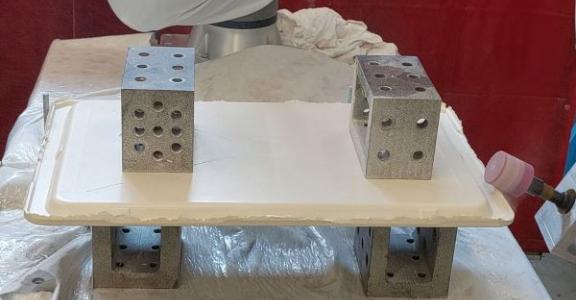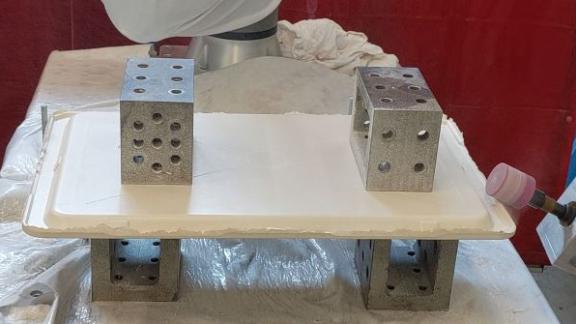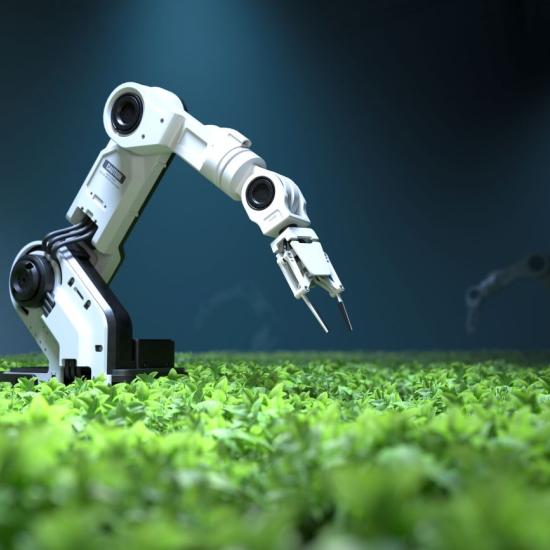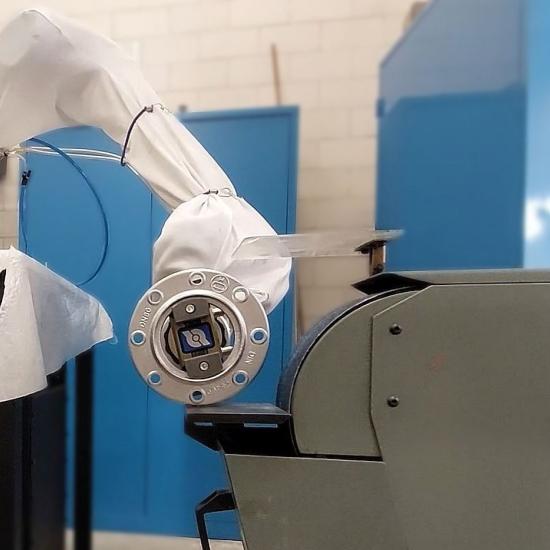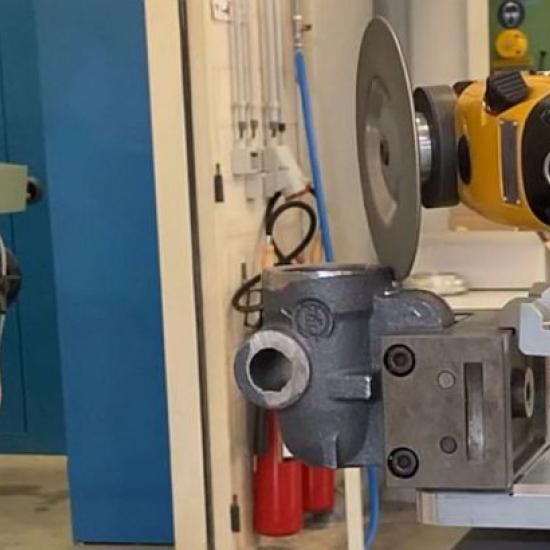To relieve operators of labour-intensive, monotonous tasks such as deburring, automation can offer a solution. However, small series and different products are a challenge. The COOCK project COBOFIN addresses this issue and seeks appropriate solutions on the basis of generic business cases.
Just like metal components, plastic ones often require finishing (deburring, sanding, etc.) in order to achieve the required final quality. Today, these finishing operations are mainly carried out manually or with custom-made machines, but this is often monotonous, taxing, dirty, time-consuming or costly. In addition, many companies cannot find suitable personnel to carry out these tasks. Automation of these operations is necessary here in order to remain competitive.
Finishing with a cobot
Commercial automation solutions are available for the finishing of large series of identical products. However, automating the finishing of small series of different products is less obvious. Fortunately, technological advances in the field of collaborative robotics (cobots) allow for a practical approach to automating the finishing of small series. The cobot supports the operator by taking over certain repetitive, dirty, taxing tasks and thus increases that operator's finishing capacity.
The COBOFIN project aims to accelerate the introduction of collaborative robots for automated sanding and deburring of small batches. In order to explore the possibilities, a support group was set up within the project, in which companies from different sectors can present cases. By developing these cases, generic knowledge about the use of cobots for post-processing parts can be built up. For example Roltex, a manufacturer of a wide range of plastic trays, made a case for plastic deburring using one of its products.
Customised deburring of trays
The composite trays produced by Roltex are first pressed, after which they have to be processed to remove burrs ('flashings'). The current process uses a custom-made machine with a mould under the tray to be machined, which is followed with dimensional accuracy. Roltex wanted to automate this process more flexibly and went in search of a system that would allow more variants to be machined, without having to use a new mould or adjust the machine each time. Automation using a cobot, following the contours of the tray with a constantly applied force, is an option that was considered.
Roltex wanted to find out if the required quality is achievable with a cobot, with which tools and settings it can be achieved, and what challenges are involved. Several tests were conducted with different materials, tools, machining angles, strategies and parameters (force, spindle revolutions and speed). Besides flexibility, ease of programming, quality and speed of finishing were important points of interest.
For example, deburring with force control was tested, which allows for less accurate programming and more flexible work. Through teaching based on a number of points, supplemented by the use of force control, the cobot can be taught to qualitatively deburr the trays .
The results showed that there is potential. The required quality proved attainable. Optimisation in terms of speed and the development of a suitable set-up can be part of further research with an integrator or via a follow-up project.
Want to know more? You can find information about the COBOFIN project on the project page. Would you also like to make use of the knowledge and services offered by Sirris concerning (cobot) automation of deburring and sanding applications for small series? Then be sure to contact us!
COBOFIN is a COOCK project, supported by VLAIO.
(Image above: Roltex)
